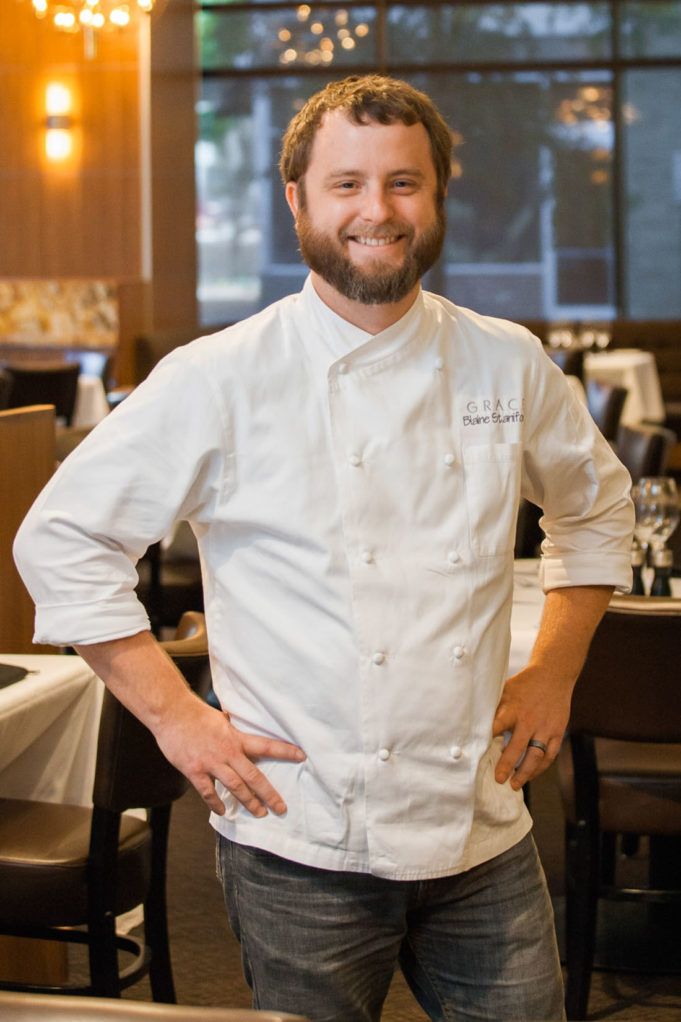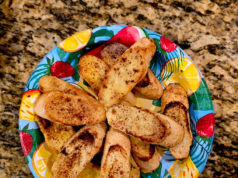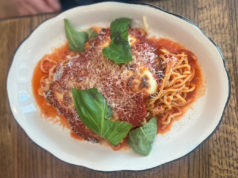We at the Weekly typically eschew schmaltz, but even we, the city’s metaphorical middle finger, can’t help luxuriating in the glow of the holiday season. In the spirit of all that is warm and fuzzy, we asked three local chefs about their holiday traditions and the role that the experience of preparing and sharing food played in shaping their lives.
Dixya Bhattarai is registered dietician, blogger, half of the innovative culinary pop-up/instructor team Hao & Dixya, and part-owner of the newly opened culinary market and studio The Table. Angel Fuentes is the chef and managing partner of standout taqueria Mariachi’s Dine-In. Along with owner Ashley Miller, he offers elevated takes on traditional and vegan Mexican cuisine. Blaine Staniford is one of the city’s best known and most revered chefs. As the head honcho at both Grace and Little Red Wasp, the North Texas native has amassed a lifetime’s worth of awards and critical acclaim.
We asked these three very different chefs the same questions over email.
The Weekly: Can you tell the readers where you are from and what kind of food you generally grew up eating?
Bhattarai: I was born and raised in Kathmandu, Nepal (land of Himalayas & Buddha) and moved to the United States in 2007. A typical Nepali meal is called daal-bhat-tarkari, which consists of lentil soup, steamed rice, and sauteed veggies or meat curry, and it was eaten twice a day. Sometimes, the meal is accompanied by pickled vegetables and yogurt. Drinking tea (chiya – spiced milk tea) is a social practice, and it’s not uncommon to drink chiya two to three times day.
Fuentes: My family is from Monterrey. I absolutely grew up eating traditional Mexican food: pan dulce (sweet bread) for breakfast; fideos (noodles), soups, and stews for lunch; and carne asada for dinner. It’s funny, my mom was so good to us, I hadn’t even tried canned soup until a few weeks ago. As a kid, my favorite thing she cooked was mole con pollo, rice, and tortillas.
Staniford: I’m from North Texas, and most of my family lives in and around the area. We grew up eating your traditional American holiday foods.
What kind of food did your family prepare for the holiday season? Were these the kinds of dishes you ate only during the holidays?
Bhattarai: Nepal is a predominantly Hindu nation, and there are two national holidays celebrated around October/November: Dashain (symbolizing the victory of good over evil celebrated for 15 days) and Tihar (festival of lights that shows reverence to not just elders and gods but also to animals such as crows, dogs, and cows). It is customary for families and friends to visit each other during these holidays, so, naturally, food plays a big part.
My grandmother would prepare shelf-stable snacks such as nimki (savory crackers with cumin seeds), furundana (Nepali Chex Mix made with savory/spicy seasonings), and a variety of fermented pickles leading up to the holidays. My mom would prepare various dishes, including rice pilaf, varieties of goat and chicken curries, cauli-aloo (a curry with cauliflower, potato, and peas), seasonal greens like mustard or spinach, and fresh pickles made with potato called aloo ko achar or tomato, tamator ko achar. Dessert like juju dhau (king yogurt), lalmohan (fried donut holes soaked in simple syrup infused with cardamom), or burfi (milk fudge) was often sourced from the neighborhood sweetshop. Goat meat and different body parts like intestine, liver, and tongue are a specialty in Dashain, so we always looked forward to it. What I miss the most about these holidays is visiting different relatives’ houses and trying their version of goat curry, nimki, or pickled vegetables.
Fuentes: At my house, we didn’t cook many special things on holidays –– we treated them like every other day with carne asadas, grilled onions, and tortillas for dinner. If my family had a little extra money, we would make a big pot of spicy charros. What really made the holidays special for me as a kid was being out of school.
Staniford: Both of my grandparents are amazing Southern cooks –– nothing was fancy, just very well executed and fresh. My grandmothers are great at making deviled eggs and mac ’n’ cheese from scratch. We always had two types of stuffing/dressing. One had to be cornbread-based, and one had to be white bread-based. My mom always made this dish called Seafoam. It’s the color seafoam –– a mixture of Cool Whip, lime Jell-O, cottage cheese, and crushed pineapple. It sounds weird, but it’s really good.
Are you carrying on these traditions?
Bhattarai: Holidays in the United States aren’t quite the same, but I try to visit my relatives in Houston when I can. Also, in the past, I have cooked a few of my favorite dishes (goat curry and cauli aloo) and invited my non-Nepali friends to share a little taste of home and holiday traditions. Being in the United States, I feel stuck in between two cultures, because I haven’t yet fully immersed in an American holiday like Thanksgiving. However, Nepali holidays feel more distant with the passing of each year.
Fuentes: Absolutely. I definitely still enjoy cooking a big pot of frijoles charros and sharing them with my friends. You can’t go wrong with a big pot of spicy beans with bacon and chorizo. I even make a vegan version for Ashley.
Staniford: My parents are divorced, so it’s a tradition to have Thanksgiving and Christmas not actually on either of the correct days.
Was preparing holiday meals a whole family affair? Or was there one person who did most of the work?
Bhattarai: Typically, the women –– my mom, grandmother, and aunts –– would spend hours in the kitchen preparing and cooking the feast. My dad helped a lot with shopping and cooking goat, which is a common animal sacrificed and eaten during Dashain. Over the years, I have seen my dad really step in to help with household duties, which is a refreshing change.
Fuentes: My brother and I would wake up every Christmas morning, open presents, and tear up some pan dulce and my abuelita’s champurrado (chocolate beverage). Afterward, we would fire up the grill and wait for my dad to get back from the butcher. My mom did the hard part, though: She made the salsas. She would use a molcajete to make the spiciest charred jalapeño-tomato salsa.
Staniford: My grandmother or step-mom prepares most of the food, with the rest of family bringing a side or dessert.
Did these holiday dishes influence your career path? Can you talk about the symbolism of the holiday meals and what that means to you and your family?
Bhattarai: While growing up, I took traditions and holiday dishes for granted and stayed far away from the kitchen. I don’t know if holiday dishes directly influenced my career path as a dietitian, but I have definitely gotten more comfortable and excited to share Nepalese dishes.
For my family and me, being able to sit together at the same table during holidays and sharing morning chiya or going to the butcher’s to pick the goat meat would mean the world because it’s such a rare affair. The last time I celebrated holidays in Nepal was about six years ago, so it’s time for another holiday trip soon. As I have gotten older, I am more interested in learning about the rituals, traditions, and food around holidays (and Nepali food in general), because I would like to continue these traditions in Fort Worth and hopefully share them with my community and pass them on to my children someday.
Fuentes: As a kid, I never thought I would make a career of cooking. Preparing a meal during the holidays was something my whole family did together. It’s a lot of work making everything fresh.
I really do feel that the sense of family and teamwork my parents showed me is something that I still bring to the kitchen to this day. Now that I’m the managing partner at Mariachi’s Dine-In, I’m not always cooking, but when I’m in the kitchen, I still find it difficult to set down the spatula. I’m lucky to have an amazing team of chefs there. Being in a kitchen for me means always keeping my hands busy.
Staniford: I’ve always been the one in the kitchen lifting lids and getting my hand slapped. I still do it to this day.












